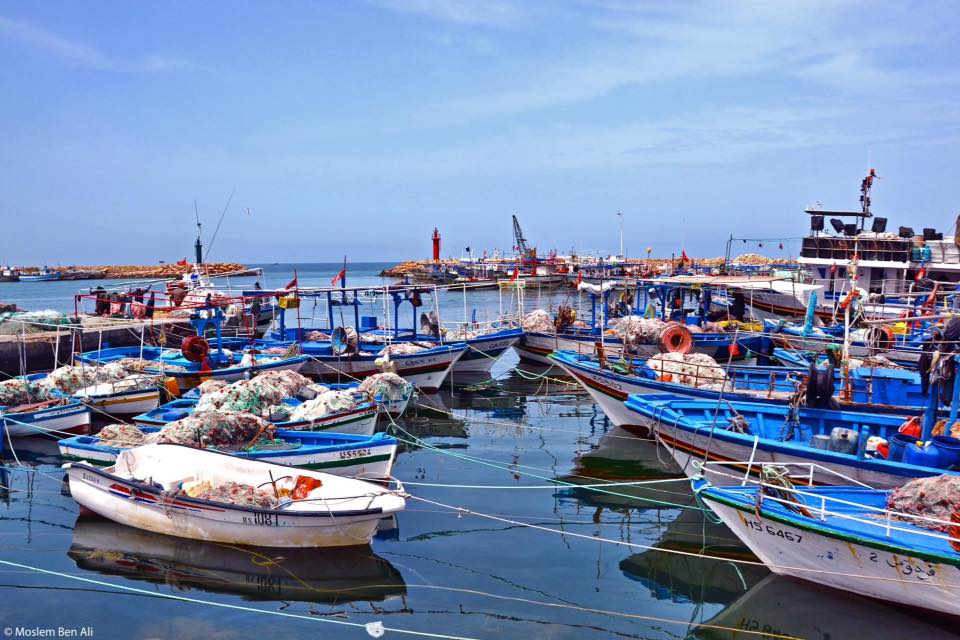
It was in the framework of a marathon that began in Kef and will end in Tozeur that a regional workshop on the process of nomination of cultural sites on the World Heritage List is held from 11 to 15 September. The objective this caravan is to register several Tunisian sites including Djerba. It is therefore a question of evaluating the assets of the island with the singular heritage, to gather the testimonies and proposals and to be inspired by the “best practice” in the region. By Amel DJAIT
The UNESCO World Heritage label is highly coveted. In addition to being a guarantee of tourist attraction, it is a pride of identity. Here and there around the world, the label generally allows to increase tourist frequentation, create jobs and a real dynamic around the labeled sites.
In Tunisia, the 7 sites classified unfortunately did not profit as it should from the manna of the label. Let us hope that from now on the authorities and the various actors, beneficiaries and interveners who commit themselves today to Le Kef, Djerba and others are more aware.
Let us hope that today the main result of the awarding of the Unesco label is the change in the world view but also and especially by the Tunisians on their country and sites. Let’s hope that in the wake of it, the sites already registered will benefit from a rejuvenation.

For the moment, and to go back to Djerba, we read on the UNESCO site : http://whc.unesco.org/fr/listesindicatives/5686/, what follows
“An area of 514 km2, occupying one of the most strategic positions in the heart of the Mediterranean Sea and little endowed with nature, the island of Djerba has had a long and rich history. the name of “the island of the Lotophages”, an inescapable stage of the great Phoenician adventure towards the West, a large counter of “industrial” productions and commercial and cultural exchanges during classical antiquity, land of the “Ghriba” the old synagogue of the entire Mediterranean West, the peaceful refuge of the Ibadhites, a “stronghold” played by the great powers of the period during the Middle Ages, conservatory of “Homeric” landscapes and millennial traditions, Djerba has kept from this rich past an archaeological, historical and immaterial heritage of a great variety: the Numidian mausoleum of Henchir Bourgou, the vast archaeological site of the opulent ancient city of Meninx, the venerable synagogue of Ghriba, the f a Turkish fortress of Ghazi Mustapha built on the site of an ancient ribat of early Islam, numerous mosques of great architectural purity and originality, a typical dispersed habitat illustrating a great ability to adapt man its natural environment and an original land use. This rich cultural heritage does not obscure the beauty and the quality of the natural landscapes still protected but which are threatened by the combination of several factors including the expansion of urbanization ”
 Program of the workshop
Program of the workshop

Tuesday, September 12, 2017
PRESENTATION OF THE CULTURAL AND NATURAL HERITAGE OF THE ISLAND OF DJERBA National Institute of Heritage (INP), association for the preservation of the island of Djerba (ASSIDJE), the municipalities of the island of Djerba.
– Overview of the island of Djerba (History, development of the island, cultural and natural heritage)
– Challenges and issues for Djerba
– Presentation of the itinerary of the visit of the island of Djerba VISIT OF THE SITES OF THE ISLAND OF DJERBA
10:00 Departure to Mahboubine, Khazroun, Jamaa Boulimane, Sedghiane, Guecheïne, Oualagh: The course of menzels
11: 00 Visit of the synagogue La Ghriba and walk to the village of Hara Sghira
12:30 Departure to Houmt-Souk and visit of Borj Ghazi Mustapha.
13:45 Visit of Jamâa El Kebir to Hashanah
14:30 Departure to Borj Jillij and visit of the fixed fisheries
15:15 Visit of Jamâa Louta (underground mosque) to Mozrane
16:15 Visit of Guellala
17: 15 Visit of the Roman site of Meninx 17th and on the road discovery of the wetlands of Bin El Ouediane and Lella Hadhria


 َAbonnez-vous
َAbonnez-vous

